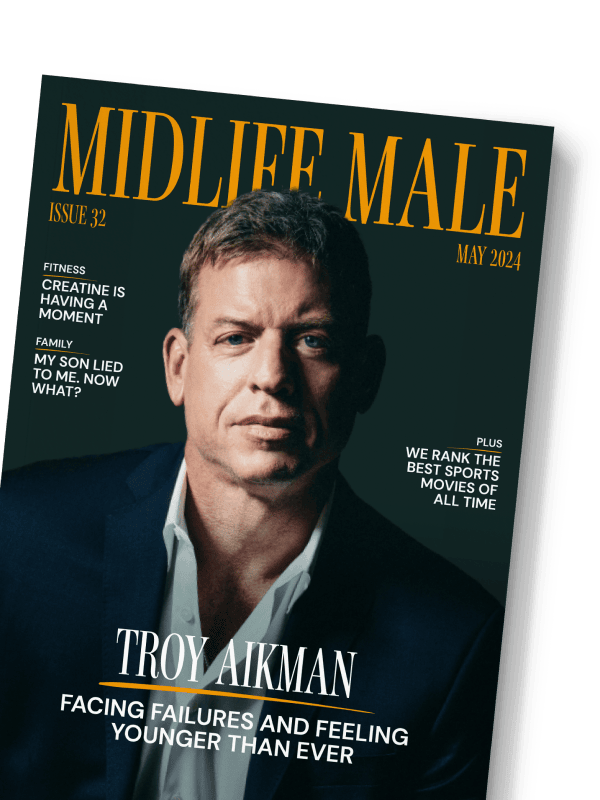When 77% of American men report experiencing symptoms of burnout, it’s clear we’re facing a silent epidemic that’s affecting countless professionals, fathers, and leaders. The relentless demands of high-pressure roles, combined with society’s expectations of male stoicism, have created a perfect storm of exhaustion and overwhelm.
The good news? Research-backed strategies exist for reclaiming your energy and mental clarity. Whether you’re feeling emotionally depleted, physically exhausted, or disconnected from what once energized you, there’s a clear path to recovery and renewal.
This guide provides practical, actionable steps specifically tailored for men to overcome burnout and restore their vitality. From establishing healthy boundaries to rebuilding your physical and mental reserves, you’ll discover proven techniques that address the unique challenges men face in today’s demanding world.
Recognizing the Signs of Burnout in Men

Men often experience burnout in distinct ways that can be challenging to identify, particularly because they tend to be less open about their struggles. According to research from the journal BMC Psychology, men typically experience cynicism as the first major sign of burnout, followed by physical and emotional exhaustion.
Physical manifestations of burnout in men frequently include chronic fatigue, persistent headaches, and gastrointestinal issues. These symptoms often occur alongside high blood pressure and increased vulnerability to illnesses due to weakened immunity.
Emotional indicators manifest differently in men compared to women. While women typically experience exhaustion first, research shows that men initially develop a cynical attitude toward work and colleagues, becoming increasingly detached and irritable.
Behavioral Changes and Warning Signs
A significant indicator is the sharp decline in work performance and motivation. Men experiencing burnout often take longer to complete routine tasks and struggle to maintain their usual productivity levels.
Changes in personal habits emerge as clear warning signals. These include increased reliance on alcohol or other substances, withdrawal from social activities, and notable shifts in eating or sleeping patterns.
Professional relationships deteriorate as burnout progresses. Men may become argumentative with colleagues, resist feedback, or display unusual cynicism about their work environment.
Physical activity patterns shift noticeably. Men who previously enjoyed exercise might suddenly lose interest, or alternatively, some might exercise excessively as a coping mechanism.
Sleep disturbances become common, appearing as either insomnia or excessive sleeping. These altered sleep patterns can intensify other burnout symptoms, creating a difficult cycle.
Emotional and Cognitive Symptoms
Mental exhaustion manifests as difficulty concentrating or making decisions. Men might find themselves staring at their computer screen, unable to focus on previously manageable tasks.
Emotional numbness or detachment can develop, hindering meaningful engagement with family and friends. This emotional distance extends beyond work into personal relationships.
Feelings of ineffectiveness and diminished personal accomplishment emerge. Men might question their capabilities and worth, even in areas where they previously excelled.
Increased irritability becomes apparent to others. Minor frustrations may trigger disproportionate emotional responses, affecting both professional and personal relationships.
Decision-making abilities deteriorate, with even simple choices becoming overwhelming. This cognitive fog impacts both work performance and personal life.
Impact on Physical Health
Chronic stress from burnout leads to persistent muscle tension and physical pain. Men commonly experience recurring headaches, back pain, or general body aches.
Digestive issues develop or intensify during burnout, including changes in appetite, stomach pain, and other gastrointestinal problems.
Cardiovascular symptoms emerge, such as elevated blood pressure and irregular heart rhythms. These physical signs underscore the serious impact of prolonged stress on the body.
Immune system function declines, resulting in more frequent illnesses. Men experiencing burnout become more susceptible to colds and other infections.
Energy levels remain consistently low, hampering engagement in daily activities. This persistent fatigue affects everything from work performance to personal relationships.
Prioritizing Self-Care and Stress Management
For men wrestling with burnout, prioritizing self-care isn’t just a luxury – it’s essential for reclaiming mental and physical wellbeing. The demands of work, relationships, and daily responsibilities can feel overwhelming, but a consistent self-care routine creates the foundation for sustainable recovery.
According to research from Talkspace, men who regularly practice self-care experience reduced stress levels, improved cognitive function, and greater emotional balance. Yet many men struggle to prioritize self-care, viewing it as self-indulgent rather than necessary.
Building a Sustainable Self-Care Routine
The key to effective self-care lies in consistency rather than intensity. Small, manageable actions performed regularly yield more lasting benefits than sporadic intense efforts.
Quality sleep forms the foundation of any effective self-care practice. Aim for 7-9 hours per night by maintaining a consistent bedtime routine and limiting screen time before bed.
Regular physical activity acts as a powerful stress reliever, releasing mood-boosting endorphins while building physical resilience. Find activities you genuinely enjoy, whether that’s weightlifting, running, swimming, or sports.
Proper nutrition provides the fuel your body needs to combat stress and maintain energy levels. Focus on whole foods, lean proteins, and plenty of fruits and vegetables while limiting caffeine and processed foods.
Implementing Stress Management Techniques
Managing stress effectively requires a multi-faceted approach combining immediate relief strategies and long-term coping mechanisms. Deep breathing exercises provide quick relief during acute stress, activating your body’s natural relaxation response.
Mindfulness meditation, even just 5-10 minutes daily, reduces anxiety and improves mental clarity. Start small and gradually build your practice over time.
Setting clear boundaries around work and personal time prevents stress from escalating. Learn to say ‘no’ to additional commitments when your schedule is already full.
Regular social connection provides essential emotional support during stressful periods. Maintain relationships with friends and family who uplift and encourage you.
Remember that seeking professional support isn’t a sign of weakness – it’s a proactive step toward better mental health. Consider speaking with a therapist if you’re struggling to manage stress independently.
Setting Boundaries and Managing Workload

The modern workplace demands constant connectivity and peak performance, leaving many professionals struggling to maintain healthy boundaries. Learning to protect your time and energy isn’t selfish – it’s essential for long-term success and well-being.
Heavy workloads and unrealistic expectations can quickly lead to exhaustion and burnout. According to research on workplace stress, one of the key contributors to burnout is an inability to set clear boundaries around work commitments.
Creating Clear Work-Life Boundaries
Establish non-negotiable boundaries around your work hours by setting firm start and end times for your workday and communicating these limits clearly to colleagues and supervisors.
Don’t hesitate to turn off work notifications after hours. Your personal time needs to be protected – those late-night emails and messages can wait until morning.
Take regular breaks throughout the day to recharge. Short 5-10 minute breaks between tasks help maintain focus and prevent mental fatigue.
Learning the Power of ‘No’
Many professionals experience burnout because they take on too many responsibilities. While being a team player is important, overcommitting helps no one in the long run.
Before agreeing to new tasks, carefully assess your current workload and bandwidth. If you’re already at capacity, practice saying ‘no’ firmly but professionally.
When declining requests, offer alternative solutions or suggestions for delegation. This maintains positive working relationships while protecting your boundaries.
Managing Workload Effectively
Use time management techniques to prioritize tasks based on urgency and importance. Not every urgent-seeming task requires immediate attention.
Break large projects into smaller, manageable chunks. This approach prevents feeling overwhelmed and helps maintain steady progress toward goals.
Consider using productivity tools to track tasks and time commitments. These tools provide concrete data to support boundary-setting conversations with management.
Negotiating Realistic Deadlines
When faced with tight deadlines, have honest conversations about what’s realistically achievable. It’s better to negotiate upfront than miss deadlines due to overcommitment.
Provide clear rationales for timeline requests, focusing on quality and successful delivery rather than just speed. Good managers will appreciate this professional approach.
Document agreements about deadlines and workload adjustments in writing. This creates accountability and prevents misunderstandings later.
Redefining Success and Work-Life Integration
The traditional markers of success – corner offices, prestigious titles, and relentless workloads – often come at a steep personal cost. For many men, pursuing these external validations leads to burnout and disconnection from what truly matters.
Work-life integration, unlike the outdated concept of work-life balance, acknowledges that professional and personal spheres naturally overlap. According to research from the Talent Logic Institute, 65% of employees report increased productivity with flexible work arrangements that support better integration.
True success means aligning your career with your core values while maintaining space for relationships, health, and personal growth. This shift requires honest introspection about what genuinely brings fulfillment versus what society has conditioned us to chase.
| Statistic | Source |
|---|---|
| Flexible work arrangements allow employees to work 1.4 more days per month, increasing productivity. | Airtasker Survey |
| 43% of remote workers reported increased productivity due to flexible hours. | Gartner 2021 Digital Worker Experience Survey |
| Flexible work leads to 21% higher profitability and 41% lower absenteeism. | Gallup Study |
| 85% of businesses see more productivity with flexible work. | Zoe Talent Solutions |
| Employees with scheduling flexibility are 43% more productive. | Bonney Staffing |
Setting Strategic Boundaries
Creating meaningful work-life integration begins with establishing clear boundaries. Define specific work hours, protect personal time, and learn to decline commitments that don’t serve your well-being or goals.
Consider designating a dedicated workspace at home to mentally separate professional and personal life. When in that space, focus on work tasks. When you leave it, shift your attention to personal life and relaxation.
Technology serves as both an enabler and barrier to healthy integration. While digital tools offer flexibility, they can also create constant connectivity. Establish clear boundaries around technology use, such as turning off work notifications during personal time.
Prioritizing Self-Care and Personal Growth
Self-care isn’t selfish – it’s essential for sustainable success. Make time for activities that recharge and fulfill you, whether that’s exercise, reading, or spending quality time with loved ones.
Regular exercise, proper nutrition, and adequate sleep form the foundation of resilience. These fundamental needs often get sacrificed in the pursuit of professional achievement, yet they’re crucial for maintaining energy and mental clarity.
Consider outsourcing tasks that drain your energy without adding value. This could mean hiring help for household maintenance or delegating more at work to focus on what truly requires your expertise.
Building Support Systems
Strong support networks are vital for successful work-life integration. This includes both professional peer support and personal relationships that provide emotional sustenance and perspective.
Seek out mentors who model healthy work-life integration. Their experiences and insights can help you navigate your own path. Remember that vulnerability isn’t weakness – it’s a strength that enables authentic connections and growth.
Consider joining professional groups or seeking counseling to process challenges and develop coping strategies. The stigma around mental health support continues to diminish, with more men recognizing its value in maintaining overall well-being.
Conclusion: Empowering Men to Overcome Burnout

The journey through burnout recovery isn’t just about getting back to baseline—it’s about emerging stronger and wiser. When men acknowledge their struggles and take decisive action to address burnout, they demonstrate true courage and self-awareness.
By implementing evidence-based strategies such as establishing clear boundaries, practicing mindfulness, and maintaining a strong support network, men can build resilience against future burnout. These tools, combined with regular self-care practices, create a foundation for sustainable well-being.
Remember that seeking professional support isn’t a sign of weakness—it’s a strategic decision to invest in your long-term health and success. Whether through therapy, counseling, or support groups, reaching out for help demonstrates wisdom and self-leadership.
Your well-being matters, and taking action to address burnout is both about personal recovery and modeling healthy behavior for others who might be struggling silently. By prioritizing your mental health, you contribute to a broader cultural shift that empowers all men to take better care of themselves.
Take that first step today. Whether it’s scheduling time for rest, having an honest conversation with a trusted friend, or reaching out to a mental health professional—every journey toward recovery begins with a single, courageous decision to change.







